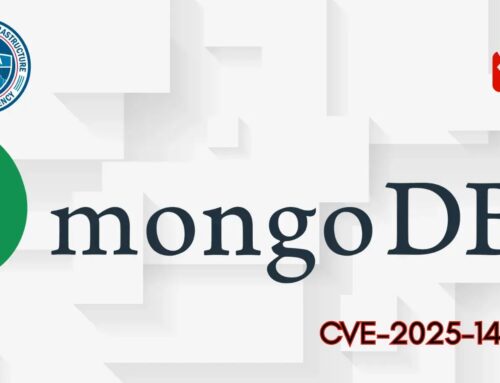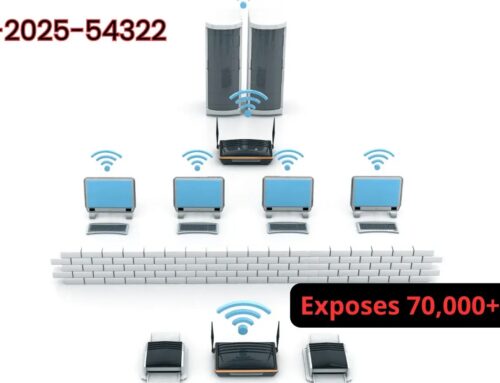
UTG-Q-1000 Group Weaponizing Subsidy Schemes to Exfiltrate Sensitive Data
Unmasking UTG-Q-1000: When National Benevolence Becomes a Data Exfiltration Weapon
The global cybersecurity landscape is under constant siege, with threat actors evolving sophisticated tactics to breach defenses and compromise sensitive data. Among the most concerning new entrants is the UTG-Q-1000 group, a highly organized cybercriminal network that has demonstrated alarming ingenuity. This group isn’t just exploiting technical vulnerabilities; they are subverting government initiatives designed for public good, specifically China’s national childcare subsidy policy, to orchestrate large-scale data exfiltration. This tactic marks a significant escalation in cybercrime, demanding immediate attention from cybersecurity professionals, policymakers, and the public alike.
The UTG-Q-1000 Modus Operandi: Weaponizing Welfare Schemes
The UTG-Q-1000 group leverages a particularly insidious method to achieve its malicious objectives. Instead of directly targeting traditional network endpoints or exploiting zero-day vulnerabilities in common software, they have identified and exploited a critical weakness in the implementation and administration of government subsidy programs. Their primary target has been the childcare subsidy scheme in China. What should be a beneficial government program, designed to support families, has been transformed into a conduit for illicit data acquisition.
The group’s technical prowess allows them to manipulate the digital infrastructure supporting these subsidies, likely through methods such as social engineering, phishing campaigns targeting administrative personnel, or exploiting misconfigurations and latent vulnerabilities within the subsidy application and management systems. Once inside, they weaponize these systems not for financial gain directly tied to the subsidy funds, but to exfiltrate sensitive data. This could include personally identifiable information (PII) of applicants, financial details, and even demographic data, all of which are highly valuable on the dark web for identity theft, fraud, and other nefarious activities.
Beyond Financial Gain: The Threat of Data Exfiltration
While many cybercriminal groups are primarily motivated by direct financial extortion through ransomware or banking fraud, the UTG-Q-1000 group’s focus on data exfiltration through such an original vector highlights a different, equally dangerous objective. Exfiltrated data can be:
- Sold on underground forums: PII, especially in bulk, fetches high prices for use in targeted phishing, elaborate scam operations, and identity theft.
- Used for sophisticated social engineering: Detailed personal information allows threat actors to craft highly convincing pretexts for future attacks, potentially targeting individuals, their employers, or associated organizations.
- Leveraged for corporate espionage: While the immediate focus is on childcare subsidies, the methodologies refined here could easily be adapted to compromise other government or corporate systems holding valuable intellectual property or strategic information.
- Used for national security threats: In certain contexts, especially concerning government systems, data exfiltration can have grave implications beyond financial loss, impacting national security and intelligence operations.
Remediation Actions for Protecting Sensitive Government and Personal Data
Addressing the threat posed by groups like UTG-Q-1000 requires a multi-faceted approach, focusing on bolstering the security posture of government systems and educating the public. There are no direct CVEs for this specific group’s overall methodology, as it exploits systemic weaknesses rather than a single software vulnerability. However, the underlying principles of secure system design and user awareness are paramount.
- Comprehensive Security Audits: Government agencies administering subsidy programs must conduct frequent, in-depth security audits of their entire digital infrastructure, from citizen-facing portals to backend databases. This includes penetration testing and vulnerability assessments by independent third parties.
- Enhanced Access Controls and Multi-Factor Authentication (MFA): Implement stringent access controls based on the principle of least privilege. All administrative access, especially to sensitive data, must be protected by robust MFA.
- Data Encryption and Segregation: Sensitive data, both in transit and at rest, should be encrypted. Data segregation can limit the impact of a breach, ensuring that an attacker gaining access to one dataset doesn’t automatically compromise all others.
- Employee Training and Awareness: Government employees handling sensitive data or administering these systems must receive regular and comprehensive training on cybersecurity best practices, including identifying phishing attempts, social engineering tactics, and safe data handling procedures.
- Public Awareness Campaigns: Citizens applying for subsidies should be educated on how their data is handled, what official communication channels look like, and how to report suspicious activities. This can help prevent common social engineering vectors.
- Robust Incident Response Plan: Develop and regularly test a comprehensive incident response plan for data breaches. This includes clear communication protocols, forensic analysis capabilities, and legal compliance.
- Vendor and Third-Party Risk Management: If parts of the subsidy system are managed by third-party vendors, rigorous vendor risk assessment and continuous monitoring of their security practices are essential.
Relevant Tools for Enhanced Security Posture
While no single tool directly combats the UTG-Q-1000’s specific MO, several categories of cybersecurity tools can significantly enhance defenses against their underlying tactics.
| Tool Name | Purpose | Link |
|---|---|---|
| Tenable Nessus | Vulnerability Scanning & Assessment | https://www.tenable.com/products/nessus |
| Wireshark | Network Protocol Analyzer (for forensic analysis of potential data exfiltration) | https://www.wireshark.org/ |
| Splunk Enterprise Security | SIEM (Security Information and Event Management) for threat detection and incident response | https://www.splunk.com/en_us/software/splunk-enterprise-security.html |
| Proofpoint Email Protection | Advanced Email Security (to defend against phishing and social engineering) | https://www.proofpoint.com/us/products/email-protection |
| Okta Identity Cloud | Centralized Identity & Access Management (for strong access controls and MFA) | https://www.okta.com/products/identity-cloud/ |
Key Takeaways and Future Outlook
The UTG-Q-1000 group represents a concerning pivot in cybercriminal operations. Their innovation in weaponizing legitimate government programs underscores the need for a comprehensive security strategy that extends beyond traditional network perimeters. Organizations, particularly those managing large datasets and critical public services, must prioritize deep security audits, robust employee training, and resilient incident response capabilities. The fight against groups like UTG-Q-1000 will be won not just through technical defenses, but through heightened vigilance, cross-sector collaboration, and a proactive stance against evolving threat methodologies.





